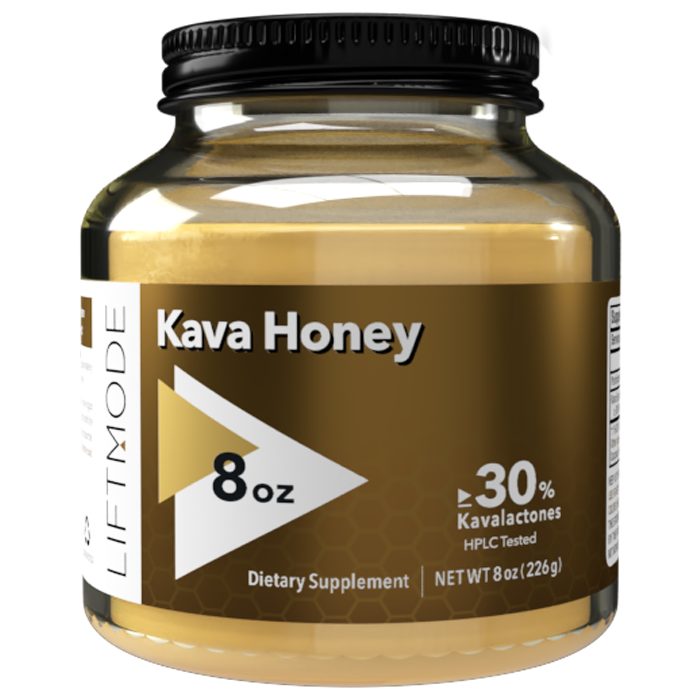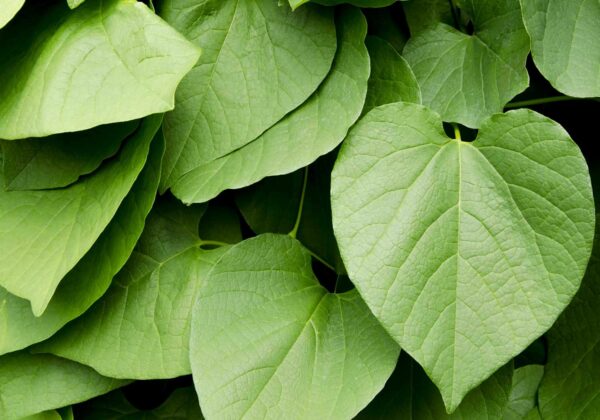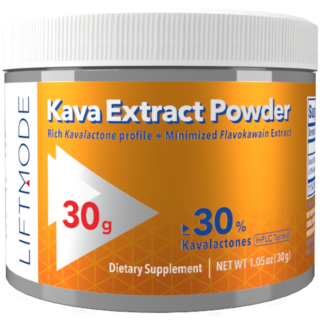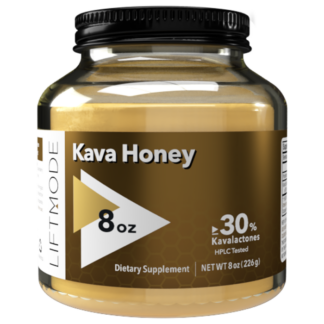Kava Honey
The tropics on a teaspoon.
A smooth, expertly balanced, versatile treat with a potential to melt stress, cut through tension, and relax effortlessly.
Into a base of rich creamed clover honey, we blended our latest, liver-friendly Noble Vanuatu kava extract, carefully selected for its robust profile of active kavalactones. But we couldn’t stop there.
Ever the perfectionists, our R&D team worked for 6 months to develop the ultimate in-house techniques to fully “unlock” the lipophilic (fat-soluble) kavalactones, provide the smoothest onset, optimal duration, and full potency the most seasoned purist would expect from a ceremonial hand-wrung root-water extraction.
After countless reworks, we reached our goal, and went beyond. With the addition of PEA, natural emulsifiers, and coconut MCT oil, we perfected potency and versatility. It has never been easier to instantly enjoy kava straight from the jar, or stir into foods and drinks. The ultimate addition to your evening tea or noontime coffee, our kava honey is the essence of peace of mind delivered by the spoonful.
Bask in the golden glow, and step into “Island time”.
Kava Honey Benefits and Uses
Kava root, also known as kava kava to indigenous tribes of the Pacific Islands, has historically been used in traditional ceremonies for its subtle psychotropic and euphoric properties. Whereas the root was most often chewed or brewed into a tea, we have delivered a brand new way to enjoy a long-loved tradition.
Kava root contains kavalactones, which are the source of the plant’s ability, to improve the body’s innate stress response, improve mood, and create feelings of enhanced sociability. While the exact mechanisms of action are not entirely understood by researchers, our high-quality kava contains a wide variety of kavalactones, each with its own individual bioactivities ranging from weak MAOI and norepinephrine reuptake inhibiting properties to sodium and calcium channel modulation.
Liftmode Kava Honey is an excellent addition to smoothies, warm drinks like green tea or guayusa, but may also provide rapid uplifting relief from tension applied directly to the tongue.
Kavalactones locked in, our tropical nectar is formulated to provide a smooth blend, with only a slight stir recommended before use.
- Ideal for a variety of temperatures to deliver kavalactones intact
- Delicate balance of glycerol and lecithin emulsification make it easier to serve, easier to measure, and enables quick and easy dispersal into even low temperature drinks
- Comforting and potentially ache-alleviating PEA (Palmitoylethanolamide) helps our honey ease the body and mind.
Liver-Friendly: The ‘Noble’ Difference
LiftMode’s Kava Honey contains a carefully sourced Vanuatu-grown kava extract made through a supercritical CO2 extraction of the dried roots of plants from the ‘noble’ variety. These roots of these ‘noble’ strains are known to contain lower amounts of flavokavaiins A and B, known as “flavokawains”.
Rich and potent, but light on the liver.
Every batch of our extract is subjected to independent, third-party analysis by a US-based laboratory, to confirm a potent and robust profile of desirable, active kavalactones, and to confirm a content of less than 0.01% flavokawains.
The end result of this careful selection, processing and testing, is a ‘clean’ kava honey, lab verified to confirm the barest presence of any potentially liver-stressing components that nearly all lesser Kava extracts leave in – yet our extract preserves and makes bioavailable all the full spectrum of Kavalactone goodness borne by the source root!
Scientific Consensus
In the US, supplementing with Kava Kava is considered to be relatively safe when taken at the recommended serving size, for short periods of time. However, there are some considerations for liver safety with regards to long-term use – especially when taken at larger serving sizes.
For more discussion on flavokawaiins, potential adverse effects, and the body of research surrounding the effects of kava, please read our ‘Disclaimer & Other Info’ section on this page.
Kava Honey Sustainability
To put you even more at ease, LiftMode kava honey does not come with a plastic scoop, as it is formulated to be easily measured with a household teaspoon. It is also packaged using sustainable and reusable recycled glass jars. Clink!
Shipping Restrictions
Several countries do not permit the import of Kava products. We cannot ship Kava to the following countries: Any country located in the EU (except Poland), Switzerland, New Zealand, Norway, Iceland, United Kingdom.
Please ensure that your country does not have any import restrictions on Kava before attempting to import our products.
The statements on this page have not been evaluated by the FDA. The products on this page are not intended to diagnose, treat, cure, or prevent any disease.










